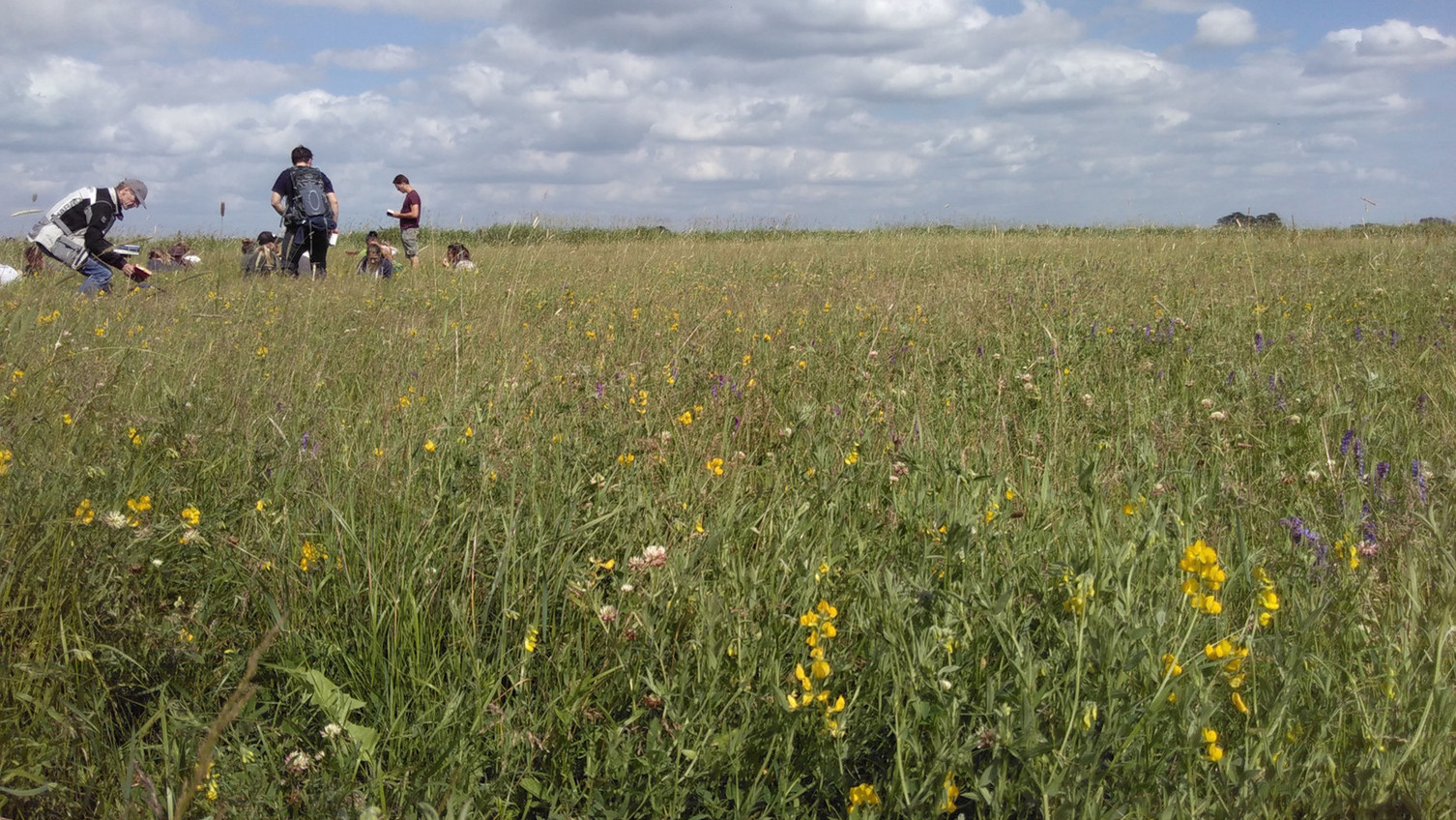Grassworks. Research against the loss of species
Under which conditions does the restoration of species-rich seas of blossoms in grassland succeed particularly well?
2021-05-31 Which ecosystem in Europe has the greatest biodiversity? Surprisingly, it is neither the forest nor the coast, but species-rich grassland, i.e. meadows and pastures. But these areas, overgrown with grasses and herbs, have been increasingly pushed back in recent decades. Vicky Temperton, Professor of Ecosystem Functioning & Services, together with a team of researchers and practitioners, is looking for the most successful methods to restore grassland in her new research project.
"Most people think of lawns and standard grass, such as German ryegrass, when they hear the word 'meadow'," says Lotte Lutz, coordinator of the project. "We are not focused on this standard grass, however, but on the great diversity that meadows and pastures can offer. There are many different types of grass. There are also many other plants, herbs, flowers and perennials that occur in such open ecosystems. It is often these very species that insects visit." Half of these species-rich, ecologically productive grassland areas have disappeared in recent decades in Lower Saxony alone; if you look at Germany as a whole and compare it with the situation around 1800, the proportion is even higher. Species-rich grassland areas are being turned into building land, farmland, forests, which are much more profitable from an economic point of view, or into intensively used, species-poor grassland. Responding renaturation concepts developed by the team of ecologists and social scientists are correspondingly diverse. "It always depends on the current situation," explains Lutz, "for example, if the area has become farmland, it can be reseeded. There are different variations on how to reestablish the desired species and how to use machinery to prepare the soil at the same time. Some of the old pastures have remained pastures, but intensive cultivation and fertilisation have left them quite poor in species. Experiences from other renaturation projects have shown that in our over-fertilised and species-poor landscapes it is often necessary to intervene relatively strongly to restore a species-rich meadow or pasture. Since there is a legal requirement not to plough existing grassland, even if the intervention leads to ecological enhancement, the legal framework may also play a major role in renaturation success."
The project involves two phases: Within phase one, Temperton and her team identify about 90 areas across Germany (divided into three project regions, Northern, Southern and Central Germany) that are particularly worth exploring in order to capture different facets of success. In phase two, these selected 90 renaturation areas will be studied in more detail from an ecological and socio-economic perspective in order to be able to learn from previous experiences in a structured way. There are many parameters which may contribute to success or failure of renaturation: A lack of appreciation for the many ecosystem services provided by species-rich grassland, or certain legally regulated intervention options and financing models, or even the establishment of rare plant or insect species, may cause difficulties for the success of renaturation. Similarly, projects with many stakeholders may work better than projects with only a few. Grassworks will shed new light on this.
At the same time, real-world laboratories will be set up in each project region, in which concrete renaturation measures are implemented in cooperation with local actors such as farmers or biosphere reserve administrations. The real-world labs will be lighthouse projects for a change in awareness towards upgrading grassland across the country and, above all, more successfully than before, rather than destroying even more grassland.
Temperton summarises the goal of the research project as follows: "Species-rich grassland is an ecosystem that is strong against extreme weather events, provides nectar, pollen and nesting opportunities for insects, stores carbon from the atmosphere, provides hay, honey and animal products. Yet we value it nowhere near as much as we should in a rapidly changing environment. In Grassworks we want to explore for Germany what exactly helps more - and what less - to succeed in restoring such strong ecosystems. If we were to restore species-rich grasslands better and more often, this would be a significant contribution to improving many current environmental problems such as insect mortality or habitat loss, and could promote resilience to climate change and people's connection to nature."
The Grassworks project, funded by the Federal Ministry of Education and Research (BMBF), and led by Vicky Temperton and Prof. Anita Kirmer of Anhalt University of Applied Sciences (Bernburg), is located at Leuphana in cooperation with Anhalt-Bernburg University of Applied Sciences, the Technical University of Munich, the Thünen Institute for Biodiversity Braunschweig, the University of Greifswald, and the German Association for Landcare (DVL) as an important practice partner.

